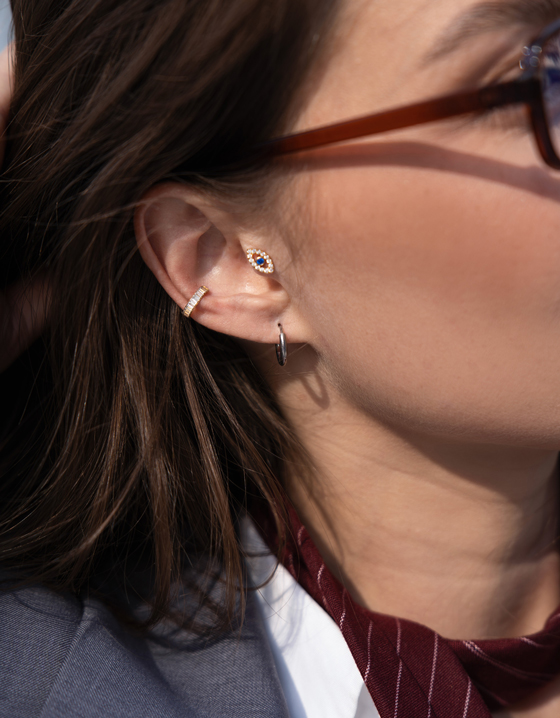Size guide
Finding the perfect fit for your piercing is not always straightforward. The size depends on the piercing placement, how it’s pierced, and your anatomy. The easiest way to find the perfect size is to measure your preowned jewelry. Scroll down and see how to measure your piercing jewelry.
Thread thickness
The thread thickness is the thickness of the part of the jewelry that goes through your piercing hole.
How to choose the right size?
The thread thickness should match the size of your piercing hole. If you choose a size that is too large, it will simply mean that you won’t be able to push it through the piercing hole. Choosing a smaller size will result in your piercing hole getting smaller, and you won’t be able to fit your preowned jewelry.
Expert advice
You shouldn’t choose a smaller size than what is recommended in the minimum thread thickness guide. Going smaller than what is recommended for the piercing type, may result in the jewelry “cutting” through the skin, and eventually growing out.
How to measure?
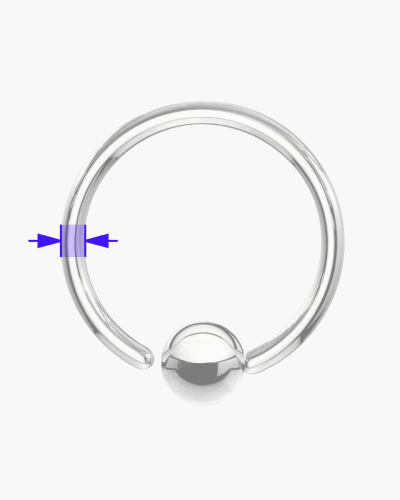

Piercing jewelry
Place a ruler on the jewelry part that goes through the piercing hole.
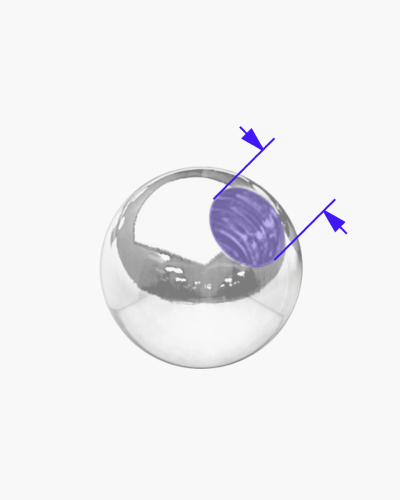

Ball & parts
If you're buying balls separately, you need to make sure that they match the thread thickness of the jewelry stem.
Length
The length refers to the length of the bar that goes through your piercing, and depends on your anatomy.
How to choose the right size?
For a perfect fit, it should match the length from one side of the piercing hole to the other. E.g. in a lobe piercing, the length should match the thickness of your earlobe.
Why is it important to choose the right length?
If the jewelry is too long, the bar will become visible - not that bad, really. On the other hand, choosing a size too small can be quite unfortunate, as the jewelry will be too tight and your body will react by swelling.
How to measure?
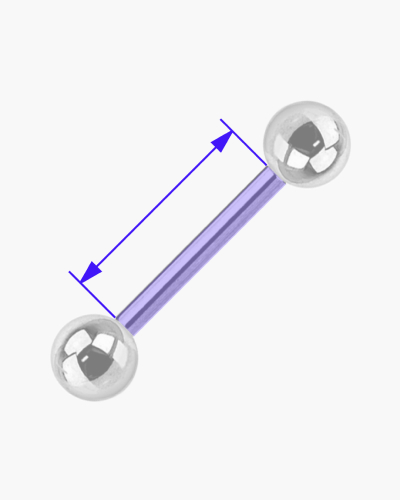

Barbell, Labret and studs
The length is measured between the balls/base
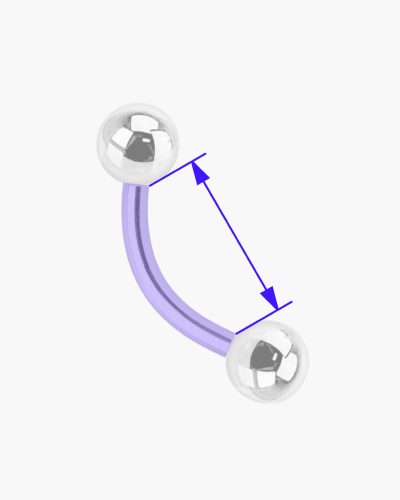

Curved barbell
The length is measured in a straight line between the balls
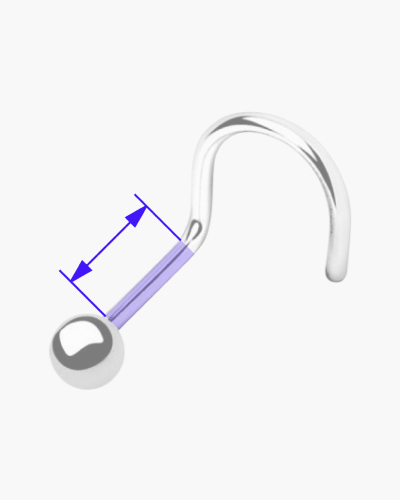

Nose screw
The length is measured between the ball and where the bar starts curving
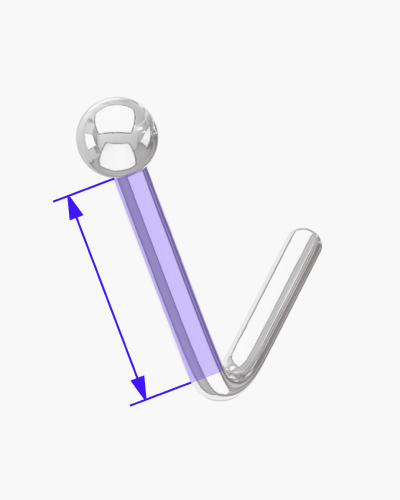

L- shaped
The length is measured between the ball and where the bar starts curving
Diameter
The diameter is often used when choosing the size for rings and horseshoes.
How to choose the right size?
Your size depends on your anatomy and where your piercer placed the piercing. For a perfect fit, the diameter should match the width of what the ring is to encircle. E.g. in a helix piercing the diameter of the ring should match either the distance from the hole and to the edge of your ear or the width of the helix fold, whichever number is biggest.
Bodymod tip
For most piercings, you can play around with ring sizes to create different looks. You can go for bigger rings or a tight fit. If you’re looking for a tight fit, be aware that you shouldn’t just go for the smallest available ring diameter, but measure your piercing, and find the perfect fit. Choosing a size too small will result in the jewelry being too tight, and the body will react by swelling.
How to measure?


Ring & horseshoe
The diameter of rings & horseshoes is measured inside the ring
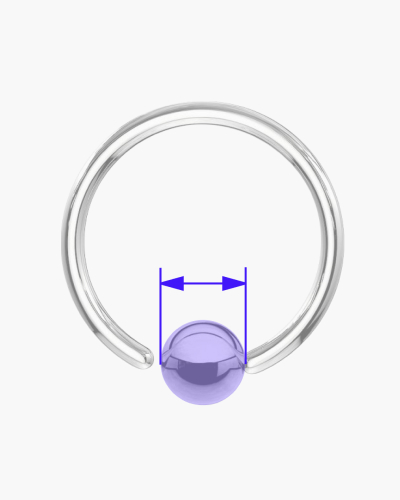

Ball diameter
The diameter is measured in a straight line
Stretching
Measuring your stretch is quite straightforward if you already have a stretching jewelry at hand. Just measure the width of the stretch that goes through the piercing hole.
What if I want to expand my stretch?
If you want to go bigger you might want to use a spiral or a taper to do so, and in this case, you should go one size up. Gently place the stretch until it feels tight, and push it bit by bit every day.
How to measure?
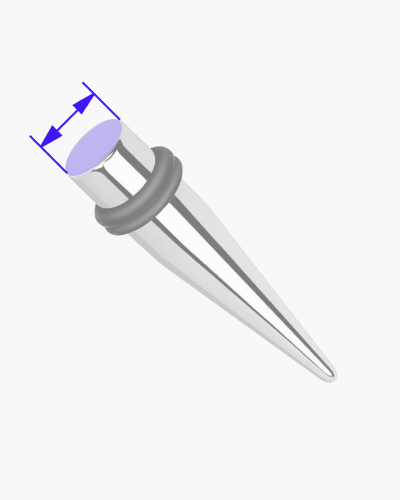

Taper
Measure the width of the thicker part in a straight line


Spiral taper
Measure the width of the thicker part in a straight line
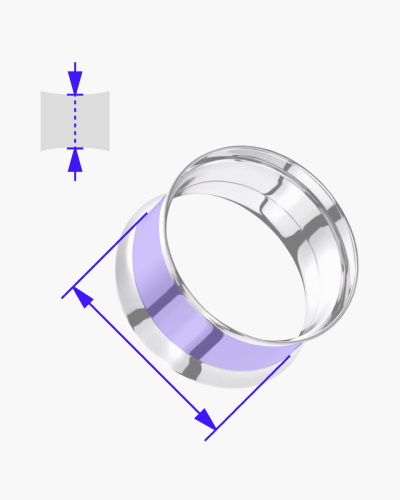

Tunnel
The diameter is measured in a straight line on center of the plug/tunnel
Balls & parts
If you're buying balls separately, you need to make sure that they match the thread thickness of the jewelry stem.
How to measure?
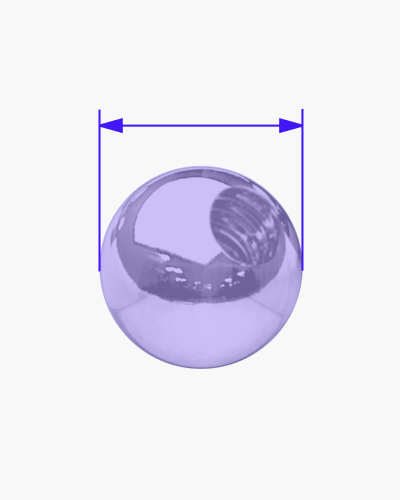

Ball diameter
The diameter is measured in a straight line
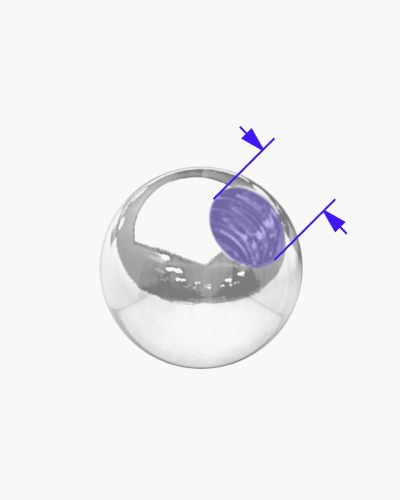

Ball
The diameter is measured in a straight line
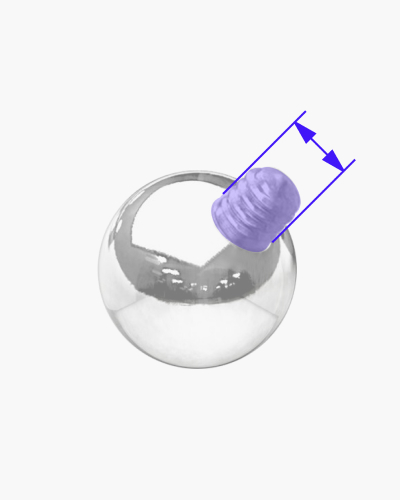

Ball with thread
The diameter is measured in a straight line


Spike diameter
The diameter is measured in a straight line


Spike height
The diameter is measured in a straight vertical line
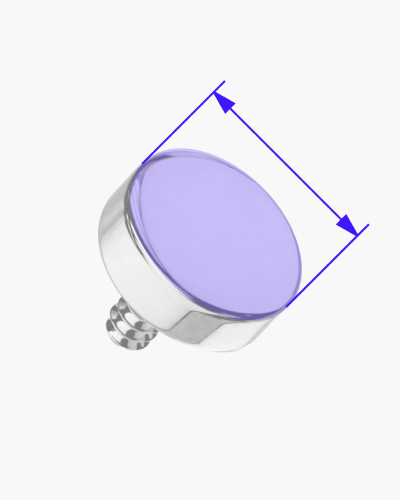

Flat ball diameter
The diameter is measured in a straight line
Minimum thread thickness guide
The standards for minimum thread thicknesses shown in the table below are indicative only. You are unique, so your size may differ from the standard one.
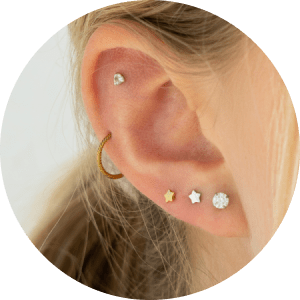 Ear piercing
Ear piercing
| Lobe | 0.8 mm |
| Tragus | 1.2 mm |
| Helix | 1 mm |
| Anti helix | 1 mm |
| Conch | 1 mm |
| Daith | 1 mm |
| Rook | 1 mm |
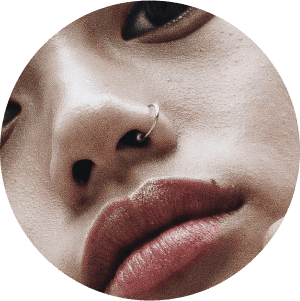 Nose & brow piercing
Nose & brow piercing
| Nostril | 0.8 mm |
| Septum | 1.2 mm |
| Bridge / Earl / Third eye | 1.2 mm |
| Bindi | 1.2 mm |
| Eyebrow | 1.2 mm |
| Anti eyebrow | 1.2 mm |
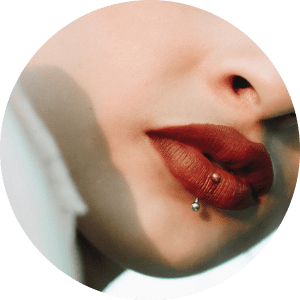 Lip & mouth piercing
Lip & mouth piercing
| Labret | 1.2 mm |
| Vertical labret | 1.2 mm |
| Horisontal labret | 1.2 mm |
| Madonna | 1.2 mm |
| Medusa | 1.2 mm |
| Angelbite | 1.2 mm |
| Spiderbite | 1.2 mm |
| Snakebite | 1.2 mm |
| Tongue | 1.6 mm |
| Smiley | 1.2 mm |
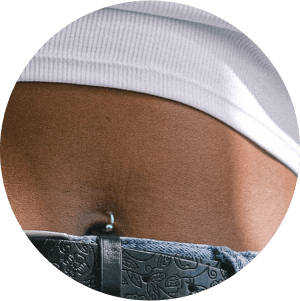 Torso piercings
Torso piercings
| Navel | 1.6 mm |
| Nipple | 1.6 mm |
| Butterfly | 1.6 mm |
| Sternum | 1.6 mm |
| Cleavage | 1.6 mm |
| Hips | 1.6 mm |
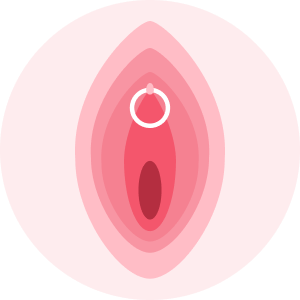 Female genital piercing
Female genital piercing
| Christina | 1.6 mm |
| Isabella | 1.6 mm |
| Fourchette | 1.6 mm |
| Labia, inner & outer | 1.6 mm |
| Clitoris hood | 1.6 mm |
| Albertina | 1.6 mm |
 Male genital piercing
Male genital piercing
| Ampallang | 1.6 mm |
| Apadravya | 1.6 mm |
| Prince Albert | 1.6 mm |
| Dydoe | 1.6 mm |
| Frenum | 1.6 mm |
| Hafada | 1.6 mm |
| Lorum | 1.6 mm |
Still have questions? Find more information on Bodymod Support

